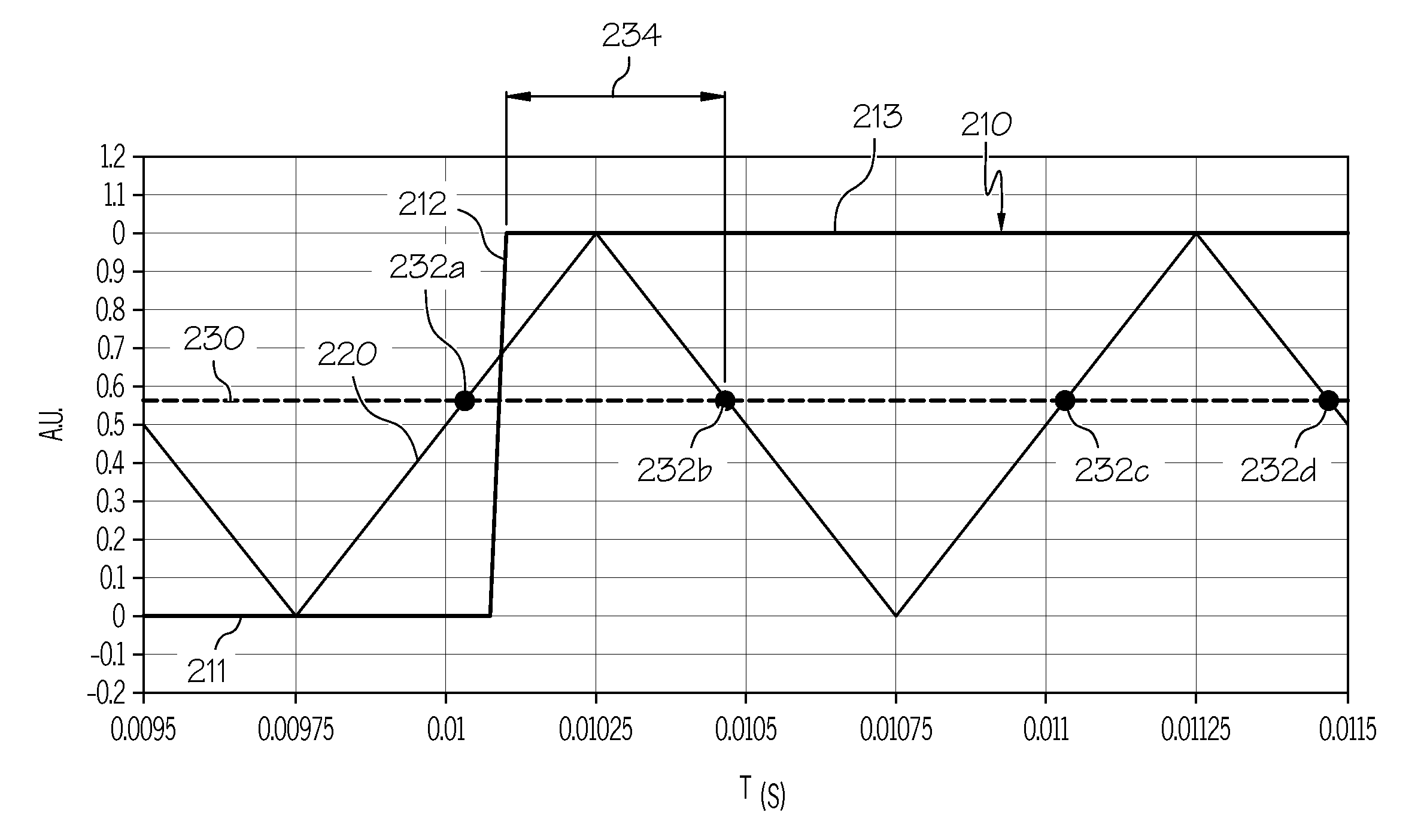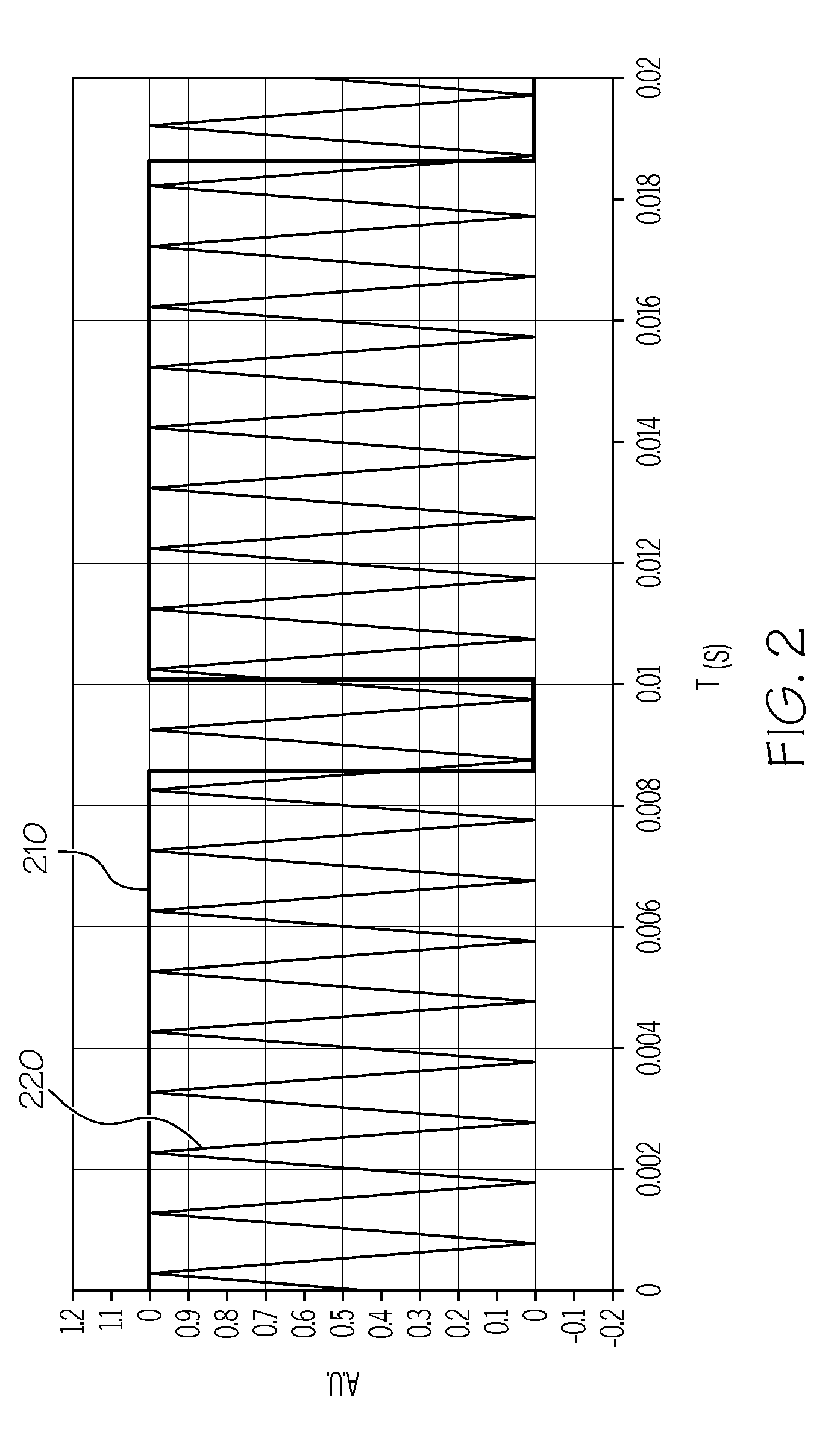Systems and methods for visible light source evaluation
a visible light source and evaluation system technology, applied in the field of semiconductor laser evaluation, can solve the problems of reducing affecting the optical output power, and affecting the accuracy of the visible light source, so as to minimize wavelength thermal drift and cavity mode-hopping, reduce the overall cost of the fabrication process, and reduce the effect of overall cos
- Summary
- Abstract
- Description
- Claims
- Application Information
AI Technical Summary
Benefits of technology
Problems solved by technology
Method used
Image
Examples
Embodiment Construction
[0018]Embodiments described herein are directed to systems and methods for evaluating visible light sources and associated semiconductor lasers and wavelength conversion devices using a low frequency periodic gain drive signal applied to the gain section and a triangular wave drive signal to a wavelength selective section of the semiconductor laser. The semiconductor laser emits a plurality of optical output pulses in response to the periodic gain drive signal and the triangular wave drive signal that are converted into higher harmonics by a wavelength conversion device. These pulses are detected and analyzed to determine if the visible light source satisfies particular specification requirements.
[0019]A system 100 for evaluating a visible light source 110 under test is illustrated in FIG. 1. The system 100 generally comprises a drive electronics controller 140 and an optical power detection and analysis module 130. As described in more detail below, components of the drive electron...
PUM
 Login to View More
Login to View More Abstract
Description
Claims
Application Information
 Login to View More
Login to View More - R&D
- Intellectual Property
- Life Sciences
- Materials
- Tech Scout
- Unparalleled Data Quality
- Higher Quality Content
- 60% Fewer Hallucinations
Browse by: Latest US Patents, China's latest patents, Technical Efficacy Thesaurus, Application Domain, Technology Topic, Popular Technical Reports.
© 2025 PatSnap. All rights reserved.Legal|Privacy policy|Modern Slavery Act Transparency Statement|Sitemap|About US| Contact US: help@patsnap.com



